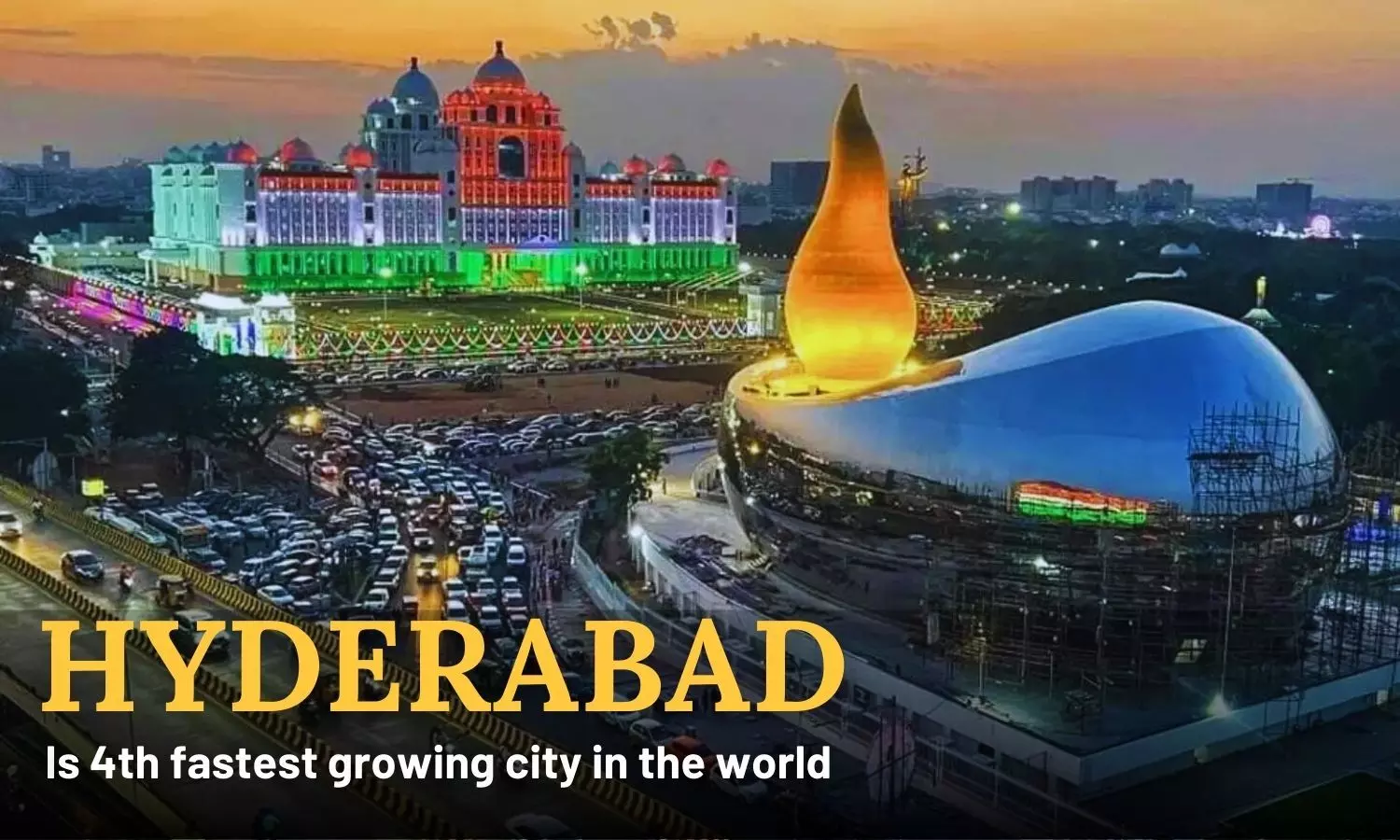Hyderabad is 4th fastest growing city in the world
The city is estimated to achieve 8.47% YoY growth to contribute $201.4 bn to the country’s GDP by 2035, says Knight Frank India-CII report
image for illustrative purpose

The top 10 fastest growing cities in the world by GDP growth rate in between 2019-35 will be in India. Vijayawada stood at the 10th position with an anticipated 8.16% YoY growth by contributing $21.3 billion to the GDP by 2035
Hyderabad will be the fourth fastest growing city in the world by GDP growth rate between 2019-35, says global real estate consultancy Knight Frank India in its latest report titled ‘Indian Real Estate: A Decade from Now’. The city is estimated to achieve 8.47 per cent year-on-year (YoY) growth to contribute $201.4 billion to the country’s GDP by 2035.
Surat, Agra and Benguluru will be the top three fastest growing cities in the world during 2019-2035 with estimated YoY growth rates of 9.17 per cent, 8.58 per cent and 8.50 per cent respectively. These three cities are projected to contribute $126.8 billion, $15.5 billion and $283.3 billion respectively to the country’s GDP by 2035, the report said.
While the existing tier-1 cities such as Mumbai and Delhi continue to generate maximum economic output, the tier-2 and tier-3 cities are as well booming. As per the report, the top 10 fastest growing cities in the world by GDP growth rate in between 2019-35 will be in India. Vijayawada stood at the 10th position with an anticipated 8.16 per cent YoY growth by contributing $21.3 billion to the GDP by 2035.
Cities in India occupy merely 3 per cent of the country's land, however, their contribution to the GDP is an estimated 60 per cent. Additionally, one percentage point increase in a district's population increases its GDP by 2.7 per cent, further enabling the country's overall economic growth. The ongoing demographical shift is contributing to a rapid urbanisation and expansion of cities.
Currently, India's urbanisation rate is pegged at 36.5 per cent translating into 79 million households. In the next one decade, an estimated 42.5 per cent of India's population or 164 million households will be residing in urban centres in India. Currently, India has 64 cities with 1 million plus population which may likely increase to 70 by 2034.
Cities are the loci of economic growth as they enable the interaction between the firms and job seekers; providing immense employment opportunities and output generation. This is especially noteworthy in the formal or the services sector. Currently, 15.3 per cent of the urban population in India is formally employed. This may increase to 28 per cent by 2034 buoyed by growing employment opportunities.
Each formal job has a capacity to generate eight informal jobs, amplifying employment opportunities and further enlarging the influx of population. Increase in employment will fuel consumption aspirations of the population raising the demand for various consumer goods and services including that of the real estate. While rapid urbanisation brings new avenues of growth, it also poses various challenges in terms of a comprehensive development of physical, social, and economic infrastructure.
In response to these challenges, there have been multiple intervention from the policy makers over the last few decades to address the same. In 2005, Jawaharlal Nehru National Urban Renewal Mission (JNNURM) was launched as a comprehensive and integrated urban development scheme with an objective to encourage reforms and fast track planned development of 65 identified cities.
The focus was on efficiency in urban infrastructure and service delivery mechanisms, community participation, and accountability of the ULBs/ parastatal agencies towards citizens. An investment of more than Rs 1 lakh crore during the seven-year period from 2005-06 to 2011-12 was envisaged in the mission.
To escalate the momentum of urban development to match the global aspirations and to incorporate the rising technological interventions, in 2015, the Central government launched the Smart Cities Mission (SCM) for a period of five years. The key objective of the mission was to promote cities that provide core infrastructure, clean and sustainable environment and give a decent quality of life to their citizens through the application of 'smart solutions'.
A total of 100 cities have been selected for development as smart cities at different timelines wherein the projects were expected to be completed in 2023. These now have been further extended till June 2024. Owing to the economic opportunities that cities can potentially generate, the focus of policy makers towards long term sustainable development of the urban centres will be necessitated.
In association with the Confederation of Indian Industry (CII), Knight Frank India has projected that the value of the Indian real estate sector will reach an estimated $1.5 trillion by 2034, constituting 10.5 per cent of the total economic output by then. In 2023, the sector's market size was approximately $482 billion, contributing 7.3 per cent to the total economic output.
According to the report, the residential market is expected to lead with a value of $906 billion, followed by the office sector contributing $125 billion. Land for manufacturing activities is estimated to generate a value of $28 billion, driven by rising demand in India, while warehousing is projected to yield revenues of $8.9 billion.

